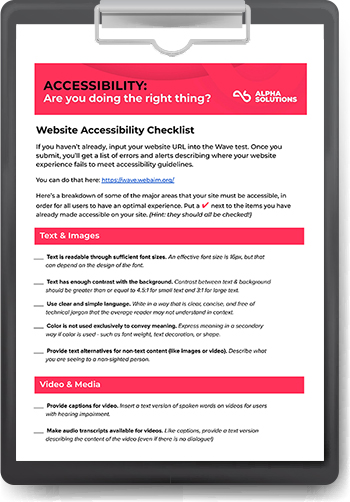Businesses today face an important choice: stick with monolithic platforms or embrace composable architecture.
This innovative, modular approach promises flexibility and scalability, but is it worth the trade-offs?
In this article, we’ll explore how businesses can navigate these choices to build a smart, cost-effective digital ecosystem.
But before we dig deeper into the topic, let’s start with a definition.
What is Composable Architecture?
Simply put, composable architecture lets businesses handpick the best tools for their needs, creating a tailored system by integrating composable technology such as…
-
composable CMS platforms
-
eCommerce engines
-
customer data platforms (CDPs),
-
…and more.
The rise of composable architecture includes a number of benefits, including:
Flexibility. You can tailor your tech stack to your specific needs
Scalability. You can easily replace tools as your business expands
Modularity. You can upgrade individual components without overhauling your entire system.
Instead of relying on monolithic platforms that promise to handle all your digital needs, composable architecture allows you to handpick best-in-class tools and services, combining them into a custom solution tailored to your unique requirements.
Learn more:
A 5-Step Process for Shifting to a Composable Commerce Platform
Allure of The Composable Architecture Approach
Composable architecture gives businesses the power to create a tailored digital ecosystem by selecting the best products for each function.
This can include:
-
CMS for content creation and management
-
CDP to collect and manage customer data
-
eCommerce solutions to handle
-
Search capabilities to improve discoverability
-
Front-end hosting platforms for rapid deployment
By choosing specialized tools in each area, businesses can theoretically assemble an optimized stack that caters precisely to their needs.
This modular approach allows for rapid upgrades, adaptability, and the freedom to replace specific tools without overhauling the entire system.
Composable Architecture vs. Microservices: What’s the Difference?
Although often used interchangeably, composable architecture vs. microservices have distinct roles in the tech landscape…
While microservices focus on breaking down applications into smaller, independently deployable components, composable architecture takes a broader view.
It allows businesses to combine various composable services—such as content management, search, and analytics—into a unified, customized tech stack.
In essence, a composable framework is about building a modular, scalable ecosystem where every piece works together seamlessly.
This system empowers businesses to adapt quickly to market demands while maintaining a focus on specific business priorities.
However, while the benefits of a composable platform are clear, they come with their own set of challenges.
Let’s explore this.
|
How accessible is your website? Get our free accessibility checklist to guide your efforts for getting compliant and doing the right thing. Plus, receive real feedback from us to help you on your next steps. |
The Hidden Costs of Flexibility
Flexibility and modularity often introduce complexity and hidden costs, which businesses must navigate carefully.
To make the most of composable systems, businesses need to align their tech investments with their priorities—and that’s where an implementation partner like Alpha Solutions comes in.
In many cases, assembling multiple specialized products, such as…
-
a content management system (CMS)
-
customer data platform (CDP)
-
eCommerce engine
-
search functionality
-
front-end hosting
… can become just as expensive as purchasing an all-in-one platform.
That’s why it’s crucial to strategically decide where to invest in premium technologies and where you can opt for more affordable alternatives, such as open-source solutions, without sacrificing your business goals.
While composable architecture’s flexibility is appealing, it comes with trade-offs. Each component, while offering cutting-edge features, often requires specialized expertise to integrate, maintain, and scale.
The more components you add, the higher the operational complexity, which can increase both the technical and financial burden on an organization.
Here are five areas where costs can add up in a composable platform:
1. Integration Costs.
Each product must be integrated with the others to work seamlessly.
This often involves significant development work, creating custom APIs, managing data flows between systems, and ensuring compatibility across platforms.
2. Vendor Licensing.
When you rely on best-of-breed solutions, you’re likely to be dealing with multiple vendors.
While each tool might offer a lower upfront cost than a monolithic platform, licensing fees for multiple products can add up quickly.
3. Operational Overhead.
Managing several systems requires ongoing maintenance and support.
Your team (or external partners) will have to handle updates, patches, security, and infrastructure management for each piece of the architecture, increasing both time and cost commitments.
4. Performance Monitoring.
Ensuring that all components work harmoniously requires continuous monitoring and testing.
If one part of the system fails, it could impact the overall performance of the digital experience, leading to additional costs for troubleshooting and fixing issues.
5. Vendor Lock-in.
Although composable architecture aims to offer flexibility, using proprietary tools from multiple vendors can lead to a new form of vendor lock-in.
Migration costs from one tool to another can become prohibitively expensive, negating the modular benefits.
When Composable Technology Can Cost More Than Full Platforms
A fully integrated digital experience platform (DXP) like Adobe Experience Cloud, Sitecore, or Salesforce offers the allure of a one-stop-shop solution, promising a unified system where all components work together seamlessly.
While these platforms come with higher upfront licensing costs, they reduce the complexity of managing multiple systems and integrating disparate tools.
The combined costs of high-performance search tools like Algolia, a premium CMS, a powerful eCommerce engine, and CDP subscriptions can add up quickly.
This, along with the hidden costs of maintaining and optimizing integrations, makes the composable architecture route potentially as expensive as, or even more expensive than, going with a fully-fledged platform.
In the end, the key to successfully leveraging composable architecture lies in making strategic decisions about where to invest in high-end solutions and where to save costs with open-source or lower-cost alternatives.
Balancing Investment with Business Priorities
Not all parts of your digital stack require premium tools, and it’s important to align your tech investments with what truly matters to your business.
Here are some considerations for when you’re evaluating whether or not to go composable…
➡️ Prioritize Core Business Functions.
Identify the digital experiences or functions that are critical to your business success.
For instance, if you are an eCommerce-driven brand, investing in a best-in-class eCommerce engine may be crucial.
Likewise, for businesses that rely heavily on personalized customer experiences, investing in a premium CDP could be the right move.
➡️ Go Open Source Where It Makes Sense.
For less critical areas or where the functionality is well-established and doesn’t require the latest bells and whistles, consider open-source solutions.
For example, using open-source CMS tools like Strapi or WordPress can provide sufficient content management capabilities without hefty licensing fees.
Similarly, leveraging an open-source commerce engine Medusa may offer what you need without requiring a costly enterprise alternative.
➡️ Evaluate Long-Term Costs.
When evaluating your tech stack, it’s important to look beyond the initial implementation.
Consider the long-term costs of maintaining and scaling your architecture.
A low-cost solution today may become a financial burden tomorrow if it requires constant maintenance or limits your ability to grow.
➡️ Leverage SaaS Offerings Wisely.
Many SaaS providers offer scalable pricing models.
Leveraging SaaS offerings allows businesses to start small and grow into higher tiers as their needs evolve.
This can help mitigate the cost of high-end tools, making them more accessible in the early stages without committing to enterprise-level contracts.
➡️ Invest in Partners.
Whether you’re using open-source tools or high-end products, the right expertise is crucial for managing a composable framework.
Ultimately, the composable architecture approach gives you the ability to actually make a choice and invest in premium technology where it matters.
But with that freedom comes the responsibility to make decisions about where premium is and isn’t needed.
Opting for premium technology across the board would be the easy choice, but it’s not necessarily the best choice.
The best choice is to find areas where you can allocate resources strategically, save money, and still have a platform that works for your business goals.
Invest in high-performance tools where they will make the most impact and use cost-effective or open-source solutions for less critical areas.
In doing so, you can create a flexible and scalable digital ecosystem that supports your business without breaking the bank.
Finding this right balance often requires extensive knowledge. Working with an implementation partner like Alpha Solutions ensures that your system is well-integrated, scalable, and cost-effective.
In conclusion…
Composable architecture offers exciting possibilities for businesses seeking tailored digital experiences.
However, it’s essential to approach this strategy with careful consideration of both costs and business needs.
While assembling a custom tech stack can deliver significant benefits, it can also lead to a bloated budget if each piece is treated as a premium requirement.
Ultimately, the decision between composable architecture and an all-in-one platform comes down to
-
your business's unique requirements,
-
long-term goals, and
-
capacity for managing complexity.
With the right approach, you can build a digital landscape that balances innovation with efficiency, giving you the best of both worlds. To learn more about whether or not a composable system is right for you, contact us at Alpha Solutions anytime.
The team at Alpha Solutions works with a variety of CMS/DXP, Commerce platforms, and search engines – some are Open Source and some are licensed. We use our knowledge, skills, and experience to help you create the best possible setup that achieves business goals based on your unique use case, budget, and timeline.








